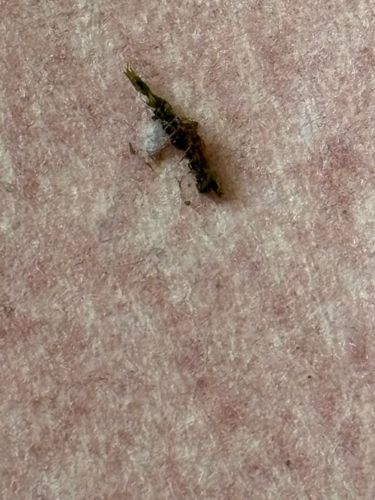Household Casebearer Moth
Scientific Name: Phereoeca uterella
Order & Family: Lepidoptera (moths and butterflies), Tineidae (fungus moths or clothes moths)
Size: Larvae are typically 1/8 to 1/2 inch (3-13 mm) long, including their case. Adult moths have a wingspan of about 1/2 inch (12-15 mm).

Natural Habitat
Indoors, especially in undisturbed areas such as closets, attics, under furniture, and rugs. Can also be found outdoors in sheltered locations.
Diet & Feeding
Larvae feed on a variety of materials including wool, silk, fur, felt, and other animal fibers; they will also consume lint, dead insects, and spiderwebs. Adults typically do not feed.
Behavior Patterns
Larvae construct and live within cases made of silk and various debris (fabric, lint, hair, natural fibers) which they carry with them. They move slowly, dragging their case along. Adults are moths that are typically attracted to lights.
Risks & Benefits
Risks: Considered a household pest, as the larvae can cause damage to natural fiber textiles, clothing, carpets, and upholstered furniture. Benefits: Generally none to humans; they are part of the natural decomposition process of organic materials.
Identified on: 8/25/2025